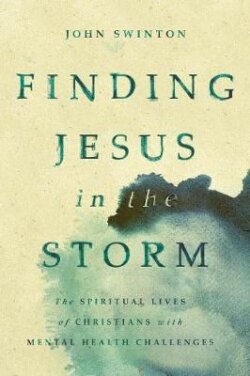Читать книгу Finding Jesus in the Storm - John Swinton - Страница 16
На сайте Литреса книга снята с продажи.
THE PRACTICE OF DESCRIPTION
ОглавлениеIn the epigraph to this chapter, the anthropologist Emily Martin refers to people living with bipolar disorder as living under a description, meaning that the diagnostic description “bipolar disorder” is only one way to describe an individual. “Bipolar disorder” is a powerful clinical description, one with a profound impact on a person’s life not only in how the person’s experiences are described and explained but also in how the person is perceived in the light of the professional and social interpretations of that particular diagnosis. Martin, however, reminds us that the clinical description “bipolar disorder,” important as it may be, is only one description among many that apply to the life of any given person. Human beings do not live according to a single description. We live under multiple descriptions, some of them accurate, some of them not, but all of them significant in their potential to affect our identity (who we are, who we think we are, who others think we are), our perception (how we and others perceive ourselves), and our actions in relation to others and toward ourselves.
The conflict over terms occurs because culture, medicine, religion, personality, and the zeitgeist all shape and form particular descriptions and explanations of mental health phenomena and then offer ways of naming, controlling, and responding to people’s experiences. Of course, more than one description can apply to any given experience. It is quite possible, for example, to argue that factors in mental health challenges are biological and cultural and spiritual—all at the same time. Nevertheless, we give certain descriptions more social and clinical power than others. At least part of the theological task of this book is to peel away those descriptions that are false, distracting, unfaithful, and damaging and replace them with ones that more accurately capture the nuances of people’s experience.
Descriptions are thus identity forming, action oriented, and action determining. To repeat, the ways in which we describe the world determine what we think we see. What we think we see determines how we respond to what we see. How we respond determines the faithfulness of our actions. Descriptions matter because descriptions change things.
In her work on the nature of intention, the philosopher Elizabeth Anscombe highlights the way in which description (the way we describe something) and intentionality (our ability to act deliberately toward something in the light of that description) are deeply interwoven. In Anscombe’s view, intentional actions, that is, actions that are about something as opposed to, for example, unintentional reflexes, are inevitably and irreducibly “actions under a description.”2 Descriptions define and confine the possible options open to us for comprehending and responding to any given situation. As Ian Hacking has put it: “All our acts are under descriptions, and the acts that are open to us depend, in a purely formal way, on the descriptions available to us.”3 Without a description there can be no intentional action. There is thus a dynamic interaction between describing something and the impact the description has on our responses to the things described. To suggest that descriptions shape our practices is not to suggest that the structure of the world is physically determined by our descriptions of it. Our descriptions do not have ontological power—meaning that things in the world do not actually come into existence because we describe them in particular ways. The universe will remain the universe regardless of my description of it. Nevertheless, my perception of and response to the universe are, to a greater or lesser extent, determined by how I choose to describe it.
Descriptions may not have ontological impact, but they do have epistemological power—meaning they shape and form the ways in which we come to know and respond to things in the world. This epistemological power of description is inseparably bound to practice: “Descriptions are embedded in our practices and lives. But if a description is not there, then intentional actions under that description cannot be there either…. What is curious about human action is that by and large what I am deliberately doing depends on the possibilities of description…. Hence if new modes of description come into being, new possibilities for action come into being as a consequence.”4 Much of the world around us exists for most of the time as nothing other than unnoticed background noise. Like the invisibility of water to the swimming fish, a good deal of our life in the world is lived unintentionally; it just hums along under the hood. When we bring certain things to the fore and choose to describe them, we bring them to attention. The nature of our descriptions determines the kind of attention we pay to those things. Once these things are described, we can act intentionally toward them. The same phenomenon can be described in many ways, and each description brings with it new sets of possibilities for intentional action. Different descriptions provide different modes of awareness, levels of intentionality, and possibilities for different forms of meaningful action.
